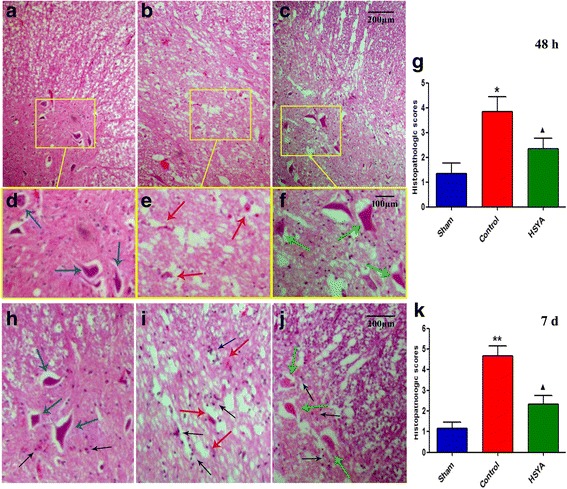Fig. 5.

HE staining of the spinal cord segments at the perilesional area 48 h and 7 days after SCI. a–f Segments at the perilesional area 48 h after SCI. a, d Normal appearance of neurons in sham-operated rat; (b, e) Spinal cord section of a rat 48 h after SCI with paraplegia, showing necrotic tissue with severe neuronal damage was evidenced by eosinophilic neuronal degeneration. c, f Near to normal appearance neurons of the anterior horn of a T9–10 spinal cord section from a HSYA-treated rat. Though more white sections remained after much more water content were dehydrated (compared to a), both spinal cord tissue integration and most motor neurons were preserved against SCI insult. h–j HE staining 7 days after SCI. In the control group, typical necrosis exhibited and characterized as broad edema, reactive gliosis, and neural apoptosis with condensed nuclei. When compared with the sham group, a significant protection from SCI-associated damage was observed in the spinal cord tissue collected from HSYA-treated rats, showed normal-like morphology with clear boundary around neural and glial. Compared with 48 h, much more neuroglia cells characterized its morphology at 7 days after SCI (black arrow), SCI much increased the number of glia cells mainly around neuro-cells in the control group compared with the sham group, and HSYA treatment effectively prevented the increase. The histopathologic score was made by the presence of edema as well as alteration of the gray matter 48 h and 7 days after SCI from an independent observer (j, k). (Original magnification 200; n = 6 per group. *P < 0.05 vs. sham group; **P < 0.01 vs. sham group; ▲ P < 0.05 vs. sham group and control group)
